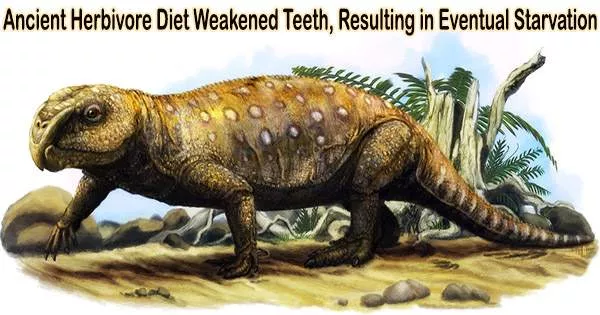The life of the ancient reptile Rhynchosaur, which wandered the world between 250 and 225 million years ago before being supplanted by the dinosaurs, has been illuminated by a team of researchers from the University of Bristol.
A genus of prehistoric reptiles known as rhynchosaurs, which are roughly sheep-sized, are still little understood. They lived during the Triassic Period, which was characterized by generally mild weather and hardy plants.
The new research examined Devonian specimens using CT scanning to examine how the teeth were replaced as the animals grew in size and how the teeth were worn down as they consumed food.
These early herbivores likely eventually starved to death in old age, with the plants damaging their teeth, according to the results, which were published today in Palaeontology.
“I first studied the rhynchosaurs years ago,” said team leader Professor Mike Benton from Bristol’s School of Earth Sciences, “and I was amazed to find that in many cases they dominated their ecosystems. If you found one fossil, you found hundreds. They were the sheep or antelopes of their day, and yet they had specialized dental systems that were apparently adapted for dealing with masses of tough plant food.”
Comparing the sequence of fossils through their lifetime, we could see that as the animals aged, the area of the jaws under wear at any time moved backward relative to the front of the skull, bringing new teeth and new bone into wear. They were clearly eating really tough food such as ferns, that wore the teeth down to the bone of the jaw, meaning that they were basically chopping their meals by a mix of teeth and bone.
Thitiwoot Sethapanichsakul
Dr. Rob Coram, who discovered the Devon fossils, said: “The fossils are rare, but occasionally individuals were entombed during river floods. This has made it possible to put together a series of jaw bones of rhynchosaurs that ranged in age from quite young, maybe even babies, through adults, and including one particularly old animal, a Triassic old-timer whose teeth had worn right down and probably struggled to get enough nutrition each day.”
“Comparing the sequence of fossils through their lifetime, we could see that as the animals aged, the area of the jaws under wear at any time moved backward relative to the front of the skull, bringing new teeth and new bone into wear,” said Thitiwoot Sethapanichsakul who studied the jaws as part of his MSc in Palaeobiology. “They were clearly eating really tough food such as ferns, that wore the teeth down to the bone of the jaw, meaning that they were basically chopping their meals by a mix of teeth and bone.”
“Eventually, though, after a certain age we’re not sure quite how many years their growth slowed down and the area of wear was fixed and just got deeper and deeper,” added Dr. Coram. “It’s like elephants today they have a fixed number of teeth that come into use from the back, and after the age of seventy or so they’re on their last tooth, and then that’s that.”
“We don’t think the rhynchosaurs lived that long, but their plant food was so testing that their jaws simply wore out and presumably they eventually starved to death.”
Rhynchosaurs played a significant role in the land ecosystems during the Triassic Period, when life was rebuilding after the world’s largest mass extinction, which occurred at the end of the Permian Period.
As the modern world was being progressively built, these animals were a part of this recovery and helped to pave the way for new forms of ecologies when dinosaurs and then mammals took control.
The research team was also able to demonstrate how the dentitions of earlier rhynchosaurs, like those from Devon, evolved over time and how their distinctive teeth allowed them to diversify twice, first in the Middle Triassic and then in the Late Triassic.
However, it appears that as the rhynchosaurs became extinct, climate change, particularly changes in the vegetation that were available, allowed the dinosaurs to take over.





